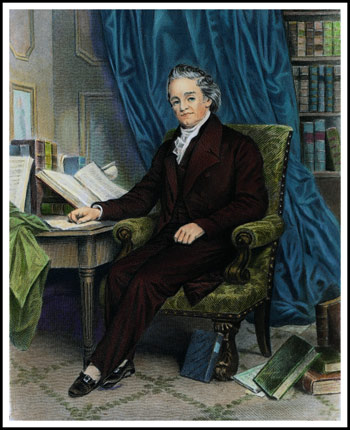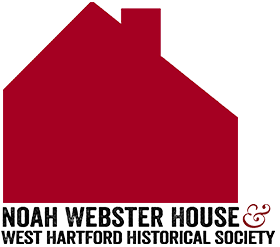Webster’s Schoolhouse
Webster’s Schoolhouse is a collection of educational resources created by the Noah Webster House & West Hartford Historical Society. Explore the life of Noah Webster and learn how the origins of American education and democracy began right here in West Hartford at Noah Webster’s boyhood home.
The Noah Webster House & West Hartford Historical Society is committed to making high quality educational resources available for students of all ages. Click on the images below to discover more about Noah Webster and life in the 1700s.
Interested in booking your school for a visit to the museum? We offer hands-on programs both at the museum and in your classroom. Click here to learn more about our roster of educational programming!
*This webpage was updated to reflect the goals outlined in the 2023 Connecticut Social Studies standards. For more on specific standards, see below.
CT Social Studies Standards
The following Connecticut Social Studies content standards were considered when creating Webster’s Schoolhouse.
Grade 1
- 1.Inq.3.a. Gather information from one or two sources to answer a question about the roles and responsibilities of individuals and groups within and among communities.
- 1.Inq.4.a. Construct arguments with reasons.
- 1.Inq.4.b. Construct explanations using correct sequence and relevant information.
- 1.Inq.4.c. Ask and answer questions about arguments and explanations.
- 1.Civ.14.a. Explain how people have worked to improve their communities in the past and present (e.g., supporting local businesses, conserving land for recreation and wildlife protection, philanthropy).
- 1.Geo.7.a. Explain why and how people and goods move around the world (e.g., families moving, trade, travel).
- 1.Geo.7.b. Give examples of how ideas are transmitted from person to person and from place to place (e.g., Internet, newspapers, social media, spoken word, popular culture).
- 1.Geo.8.a. Compare how urban, suburban, and rural communities use local and distant environments to meet their daily needs (e.g., agriculture, goods, housing, open space, transportation).
- 1.Eco.4.a. Describe goods and services produced locally and in other communities (e.g., raw materials, electronics, food, clothing)
Grade 2
- 2.Civ.6.a. Describe how individuals and groups work interdependently to improve their community (e.g., education, health, recreation, safety).
- 2.Civ.6.b. Describe how families are structured to accomplish common tasks, establish responsibilities, and fulfill roles.
Grade 3
- 3.Inq.1.a. Explain why compelling questions about Connecticut and Local History are important to others (e.g., peers, adults).
- 3.Inq.4.a. Construct arguments using claims and evidence from multiple sources about Connecticut history.
- 3.Inq.4.b. Construct explanations using reasoning, correct sequence, examples, and details with relevant information and data
- 3.Civ.6.a. Describe how people benefit from and face challenges working together in various settings to address problems (e.g., families, governments, schools, volunteer organizations, workplaces).
- 3.Civ.6.b. Describe ways in which families and communities in early United States History were organized to promote mutual benefit and address challenges (e.g., familial and social structures of Indigenous, European, and Black communities)
Grade 5
- 5.Inq.4.a. Construct arguments using claims and evidence from multiple sources about United States history.
- 5.Inq.4.b. Construct explanations using reasoning, correct sequence, examples, and details with relevant information and data.
- 5.His.14.b. Describe the causes and effects of European exploration and settlement of the Americas (e.g., conflict, enslavement, land rights, sovereignty, trade).
- 5.His.16.a. Use evidence to develop a claim about a significant person, place, or event in Connecticut during the Colonial Era (e.g., Pequot War, Connecticut Witch Trials, Charter Oak).
- 5.His.1.a. Employ chronological thinking to create timelines comparing the events that led to the American Revolution (e.g., Seven Years War, Parliamentary acts of taxation, Boston Tea Party, Boston Massacre, Declaration of Independence).
- 5.His.10.a. Compare information provided by multiple historical sources about the people and events of the American Revolution (e.g., purpose, maker, significance, fact, opinion, bias). 5.His.14.e. Explain probable causes and effects of major turning points in the American Revolution (e.g., Battle of Bunker Hill, Boston Massacre, Saratoga, Valley Forge).
- 5.His.16.b. Use evidence to develop a claim about the role of Connecticut in the American Revolution (e.g., Provision State, privateers, Tory and Patriot sentiments).
- 5.His.16.c. Develop a claim about significant people, places or events in Connecticut during the American Revolution (e.g., Jonathan Occum, Israel Putnam, Hannah Bunce Watson, Benedict Arnold, Jordan Freeman).
- 5.Civ.3.a. Examine the origins and purpose of key provisions of the United States Constitution (e.g., checks and balances, limited government, popular sovereignty, republicanism, separations of powers, federalism)
- 5.Civ.14.a. Illustrate how individuals and groups in the Revolutionary Era and today have and can effect change (e.g., school, community, and state issues).
- 5.Civ.10.b. Identify the contributing factors that underlie multiple and varied points of view about school, community, and civic issues.
- HIST 5.4 Explain why individuals and groups during the same historical period differed in their perspectives.
- HIST 5.7 Generate questions about multiple historical sources and their relationships to particular historical events and developments.
- HIST 5.8 Use information about a historical source, including the maker, date, place of origin, intended audience, and purpose to judge the extent to which the source is useful for studying a particular topic.
- CIV 5.1 Explain how groups of people make rules to create responsibilities and protect freedoms.
- CIV 5.2 Describe ways in which people benefit from and are challenged by working together, including through government, workplaces, voluntary organizations, and families.
- CIV 5.3 Identify core civic virtues and democratic principles that guide government, society, and communities.
- ECO 5.1 Identify positive and negative incentives that influence the decisions people make.
- ECO 5.3 Explain why individuals and businesses specialize and trade.
- GEO 5.2 Explain how culture influences the way people modify and adapt to their environments.
- GEO 5.3 Explain how human settlements and movements relate to the locations and use of various natural resources
Grade 8
- HIST 8.2 Classify series of historical events and developments as examples of change and/or continuity.
- HIST 8.3 Analyze multiple factors that influenced the perspectives of people during different historical eras.
- HIST 8.5 Analyze how people’s perspectives influenced what information is available in the historical sources they created.
- HIST 8.10 Organize applicable evidence into a coherent argument about the past.









